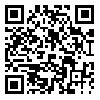BibTeX | RIS | EndNote | Medlars | ProCite | Reference Manager | RefWorks
Send citation to:
URL: http://sjsph.tums.ac.ir/article-1-5617-en.html
2- MSc. Department of Epidemiology and Biostatistics, Faculty of Health, Ahvaz Jundishapur University of Medical Sciences, Ahvaz, Iran
3- Ph.D. Assistant Professor, Research Centre for Social Determinants of Health, Department of Health Education and Promotion, Faculty of Health, Ahvaz Jundishapur University of Medical Sciences, Ahvaz, Iran ,
Background and Aim: Considering the lack of attention to the health promotion of adolescents due to their perception of being healthy in most countries of the world, we aimed to evaluate the predictors of adolescent health promoting lifestyle through path analysis based on IMB model.
Materials and Methods: This is a descriptive-analytic study on 400 high school students in Andimeshk city in two urban and rural areas. The sample size was obtained using the Cochran formula.They were selected by classified random sampling. In this study, demographic data, information about IMB model structures and student adherence to healthy lifestyle were collected in four areas nutrition, physical activity, stress control and responsibility. Correlation between total structures was analyzed using SPSS-23 software. Lisrel 8.5 software. Meanwhile, the relationships between variables were analyzed using Path analysis to fit and approve model fit model using LISREL8.8 software.
Results: All structures of IMB model had a Significant relationship with adolescent healthy lifestyle. Self-efficacy structure had the most predictive power. In general, self-efficacy variables, 75%, motivation 66%, and 50% knowledge had a positive and significant effect on behavior. This model was able to explain 71% of the variance in adolescent lifestyle behavior. Also, in this model, the level of self-efficacy variance (behavioral skills), 52%,, And motivation variance was explained 57%. Motivation and knowledge indirectly influenced the lifestyle behavior (behavior) by 55% and 50%, respectively.
Conclusion: The findings of this study showed that the IMB model has a good application for explaining and predicting the healthy lifestyle of adolescents. Accordingly, it is recommended that health planners apply the IMB model in order to promote adolescent lifestyle in this population.
Received: 2018/06/18 | Accepted: 2018/06/18 | Published: 2018/06/18
| Rights and permissions | |
 |
This work is licensed under a Creative Commons Attribution-NonCommercial 4.0 International License. |





